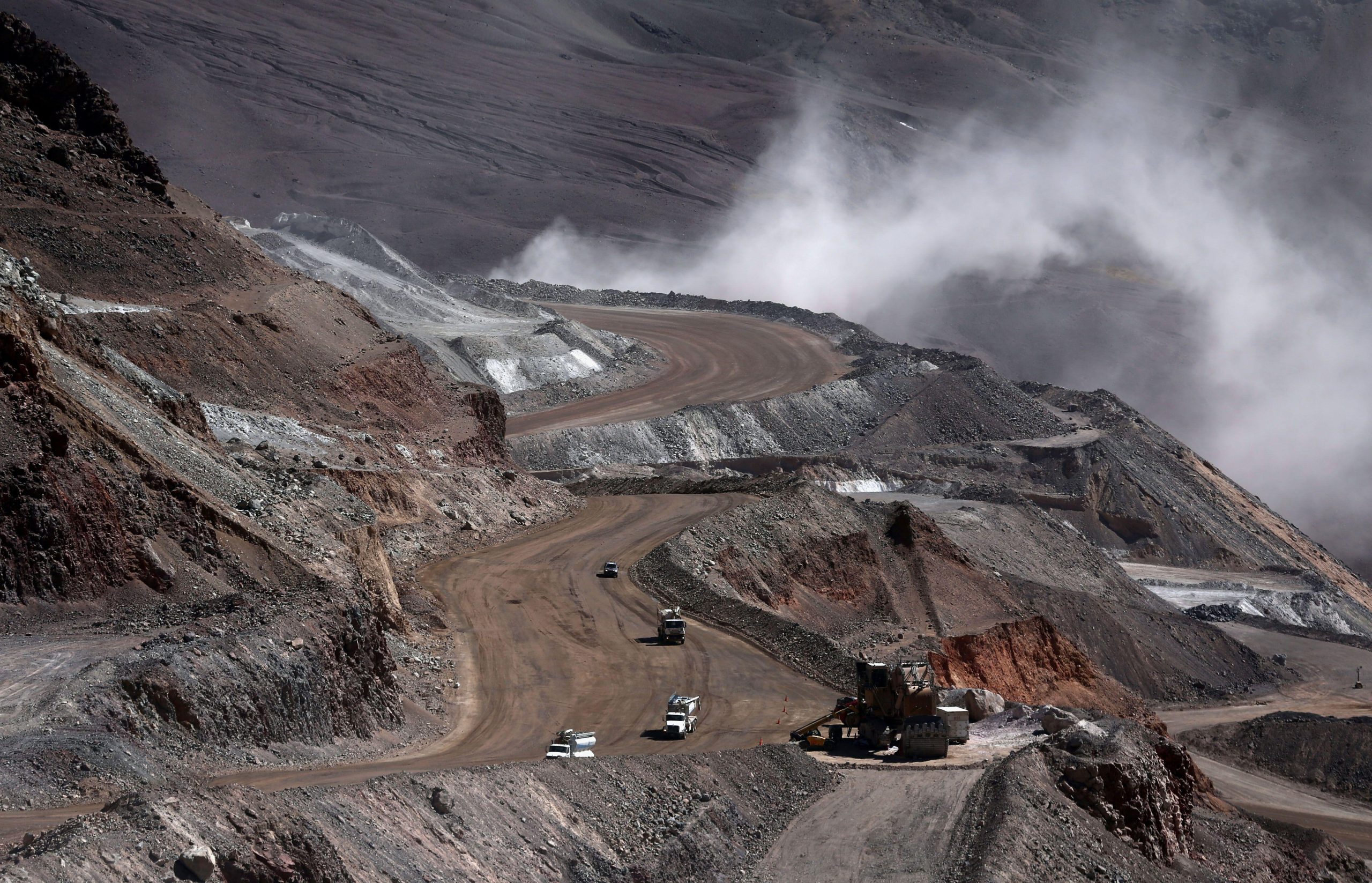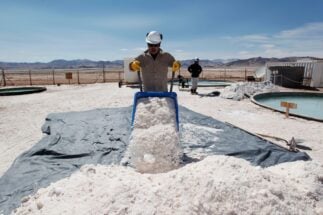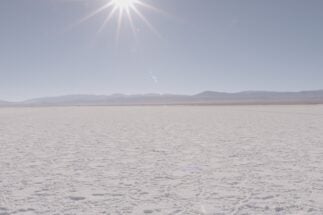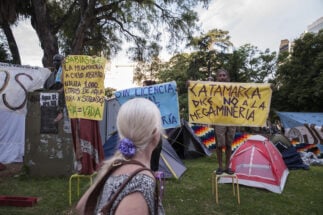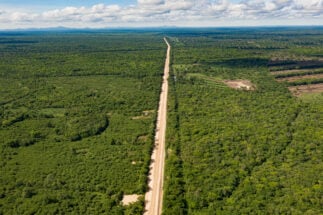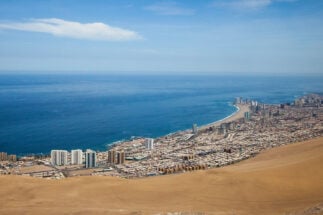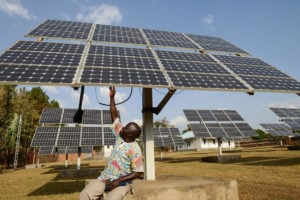Argentina’s government is seeking to grow the country’s mining output to improve foreign exchange earnings, with the introduction of a set of new incentives for the sector.
As due dates on its heavy external debt arrive on the horizon – and in the midst of negotiations with the International Monetary Fund to refinance the record US$57 billion loan it received in 2018 – the Fernández administration is looking to a diverse range of minerals as a means to boost its economy.
However, the new incentive scheme faces questions over socio-environmental aspects of the sector’s expansion, due to the impact of its activities on local communities. The most recent episode was the approval of mining in areas of Chubut province, which sparked massive protests and led the government to ultimately reverse its decision.
On the other hand, the renewed impetus comes in a context of energy transition, and increased global demand for minerals that are essential to many technologies. According to the International Energy Agency, demand for minerals is set to double or even quadruple by 2040, depending on the degree of adoption of new technologies.
The mining sector in numbers
According to data provided by Argentina’s mining secretariat, nine metal-mining projects are currently operating in the country. The main products are gold, silver, lead and zinc, along with the much-talked-about lithium, for which there are two projects in operation and another under construction. Operations are concentrated in the provinces of San Juan, Santa Cruz, Catamarca, Salta and Jujuy.
In recent years, these minerals have been extracted by a number of companies with strong foreign capital investment and local subsidiaries. These include: the Canadian firm Barrick Gold and China’s Shandong Gold, which make up Minera Andina del Sol; South Africa’s AngloGold Ashanti that runs the Cerro Vanguardia gold and silver mine; Newmont – the world’s largest gold mining company – and its Argentine subsidiary, Oroplata; multinational giants Glencore and Yamana that operated the Minera Alumbrera copper-gold mine, alongside Newmont; and Minera Santa Cruz, jointly operated by British firm Hochschild and Canada’s McEwen Mining.
US$2.6 billion
The value of Argentina's mining exports in 2020, with the Covid-19 pandemic a factor in the decrease from US$3.2 billion in 2019.
The Argentine mining sector operates on the basis of concessions granted by provinces, which own the resources. Mendoza, Chubut, Córdoba and San Luis all currently have legislation limiting or prohibiting mining activity, as a result of social pressure against its development.
Large-scale mining has been boosted since the mid-1990s by low taxation, fiscal stability measures and the possibility of settling its legal disputes in international tribunals. In fact, the sector pays practically no value added tax (VAT) and has a special regime for income tax.
In 2020, affected by the Covid-19 pandemic, the value of mining exports fell to US$2.6 billion, down from US$3.2 billion in 2019. But the mining sector’s contribution in terms of value added is much lower than its weight in exports: its contribution to Argentina’s GDP is just 0.6%, according to official data provided to Diálogo Chino. In terms of employment, direct registered jobs in the sector amounted to 9,681 in 2019, representing 0.15% of formal employment in the country. It is these such figures that the government hopes to see grow with its new set of incentives.
New commitment to mining
The government of Alberto Fernández has set out to increase annual mining exports to more than US$10 billion over the next ten years, thanks to investments of US$25 billion from the 34 mining investment projects in the country that are at a more advanced stage.
To provide a further incentive, export taxes for the sector were reduced from 12% to 8% in October 2020; for 2022, the government is considering an even more flexible scheme. In addition, last April, the transfer abroad of profits and dividends was made more flexible for exporters that invest more than US$100 million.
34
The number of mining investment projects at an advanced stage in Argentina. The government hopes these may contribute to a US$7 billion increase in the value of annual mining exports in the next ten years.
The new incentives are part of the Strategic plan for mining development (PEDMA), whose official presentation has been delayed for several months, though many of its details have already been announced. This programme proposes a new approach to mining supposedly linked to sustainability and dialogue with various societal actors, as well as including a series of additional benefits and incentives for mining companies.
“The tax burden [in Argentina] is still higher than in countries that it competes with in terms of mining production,” says Luciano Berenstein, executive director of the Argentine Chamber of Mining Entrepreneurs (CAEM). The sector is calling on the government to further reduce withholding taxes taken from employees’ wages, speed up VAT refunds and increase access to the foreign exchange market.
Daniel Schteingart, director of the Centre of Production Studies (CEP XXI), which reports to the Ministry of Productive Development, argues that mining in Argentina is, together with hydrocarbons, the sector that pays the highest wages, and has the highest rate of formal employment in the economy.
“Mining leaves much more in the country than what is usually stated,” Schteingart adds. He says that between 12% and 14% of its sales stay in the form of taxes – mostly social security and withholdings – 30% of purchases from suppliers, and between 11% and 12% in the wage bill. In addition, part of the sector’s profits are reinvested.
The government welcomed the recent announcement by the Canadian company Lundin that it will invest US$4.2 billion to produce copper, gold and silver in San Juan province. According to company estimates, it will generate 2,500 jobs and US$1.7 billion in annual exports. It is due to start operations in 2026 and have a useful life of up to 19 years.
Elsewhere, Canada’s Barrick Gold and Chinese company Shandong Gold announced investments to extend the life of Veladero – Argentina’s largest gold mine – to 2030, while the Lindero mine, operated by the Canadian company Fortuna Silver Mines, started operating this year. It became the first open-pit mine in Salta province.
Meanwhile, there are investments to expand lithium extraction at existing projects run by Orocobre–Toyota, an Australian and Japanese partnership, and by US company Livent, along with the upcoming launch of Cauchari–Olaroz, operated by Minera Exar, a joint venture from Canada’s Lithium Americas and China’s Ganfeng Lithium. There has also been investment from French firm Eramet to build the Centenario–Ratones project from 2022.
Social conflicts
Despite the government’s claims on the scheme’s commitment to sustainability and consultation, environmental organisations do not foresee many changes from how the sector has developed in the past.
“We see a horizon of increasing conflict with communities, because large-scale mining has traditionally provoked all kinds of rejection over the last two decades,” explains Pía Marchegiani, director of environmental policy at the Fundación Ambiente y Recursos Naturales (FARN). “Civil society is organised, and governments have repeatedly failed to listen and manage conflicts.”
For Marchegiani, the main problems relate to the use of water, since the projects are located at the headwaters of the basins that are used by the communities downstream. “There is competition for the resource,” she says.
“This is taking place in a context of lack of information, lack of community participation, institutional weaknesses and criminalisation of protest. As a result, when it comes to decisions, there are usually no options other than total rejection,” she adds.
A turning point came in 2015, when the biggest accident in national mining history occurred at the Veladero mine in San Juan, managed by Barrick Gold. Five rivers in the province were contaminated with heavy metals from a broken valve.
“It reopened debates on the uncertainty inherent to this type of project, not only in terms of their environmental impact, but also in terms of transparency of information and government capacity to control [these activities],” says Lucrecia Wagner, a researcher at government science and technology agency, CONICET.
It is a mistake to think that facilitating business and handing over mining wealth will generate development
Marcelo Giraud, a member of AMPAP, an organisation fighting for clean water in Mendoza province, argues that although mining salaries are higher than average, such jobs are not usually for natives of the provinces, but for local and international migrants. “It is not quite right to say that metals mining represents a substantial contribution to the demand for local labour,” he added.
Just as it demands workers, large-scale mining can also jeopardise the continuity or viability of other sources of employment, Giraud argues. “Therefore, where it is clear that society does not grant a ‘social license’ to mining projects, job creation is by no means a compelling argument to counterbalance the impacts and risks involved,” he adds.
For Nicolás Gutman, head of the environmental section of the Scalabrini Ortiz Centre for Economic and Social Studies (CESO), “it is a mistake to think that facilitating business and handing over mining wealth will generate development”.
“There is no capacity for control on the part of the provinces, and companies do not develop local suppliers in the industrial area because they can bring in free machinery that they have stopped using in other parts of the world,” he added.
Despite the concerns and contestations of civil society groups, the Fernández government is likely to press on with the new scheme and its incentives, with the formal presentation of its strategic plan, PEDMA, set to arrive early this year, after stalling in 2021. Reports say the government will seek to achieve consensus with civil society before the presentation.
